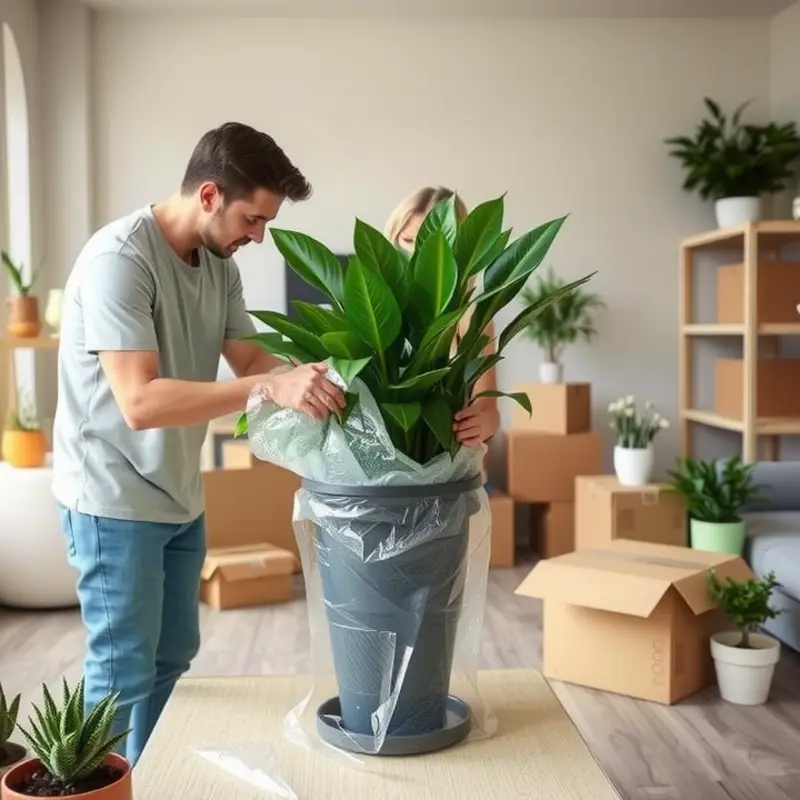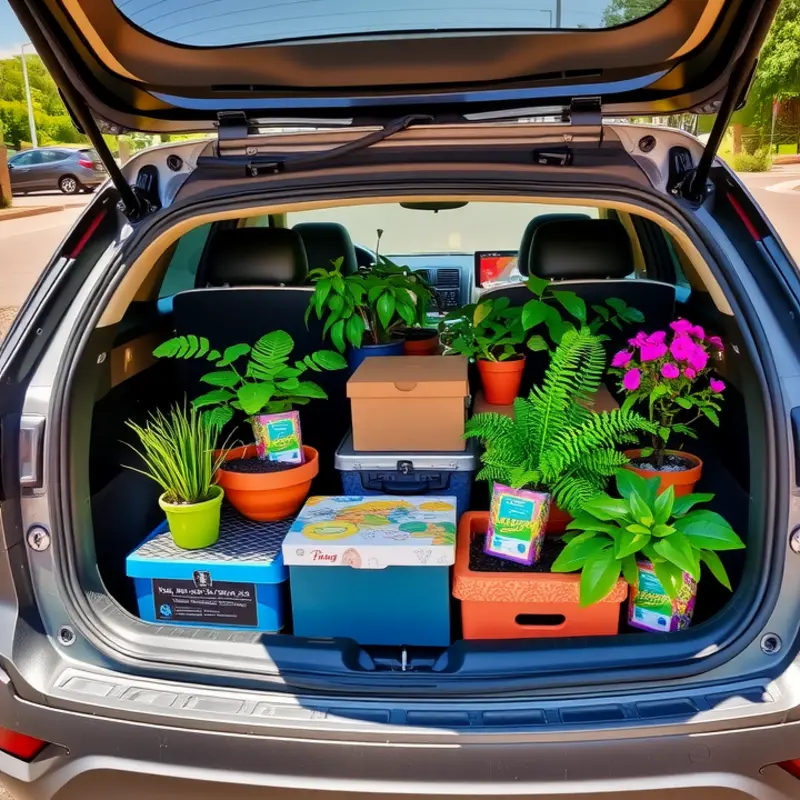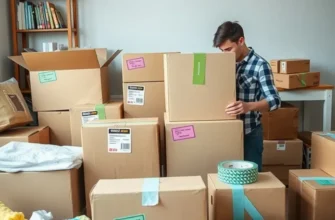Moving to a new place can feel like a double-edged sword. On one hand, you’re stepping into new adventures; on the other, you’re tasked with packing everything up— including your leafy friends! For many first-time renters and young professionals, houseplants aren’t just decor; they’re companions that breathe life into your cozy space. But how do you transport them safely from one abode to another without losing a single leaf? Fear not! From succulent sidekicks to towering fiddle leaf figs, this guide will ensure all your green friends make it to your new home safe and sound— and maybe even a little greener! Prepare yourself for some practical advice, a dash of humor, and everything you need to know to keep your plants happy as you embark on your next big move.
Preparing Your Plants for the Big Move

The transition period before a move can be hectic. But amidst the boxes and logistics, let’s make sure your cherished houseplants aren’t left out. Here’s how you can prepare your green companions for their journey, ensuring they reach their new home healthy and thriving.
First things first: consider which plants will be tagging along. Some species handle the stress of moving better than others, and space might be tight. Evaluate your collection and select the plants that are in good health and less prone to stress. These are the ones that typically have a robust root system and have shown resilience to changing conditions in your care.
Next, acclimating your plants to the upcoming change is crucial. Start a few weeks before the move by gradually exposing them to different conditions simulating what they might experience in transit. If you’re moving to a drastically different climate, try to create mini transitions, such as adjusting light exposure. This subtle preparation can reduce the shock your plants might experience.
Pruning is also an essential step to prepare your plants for the trip. By carefully trimming back overgrown or damaged leaves, you reduce the plant’s water needs and help them conserve energy. A couple of weeks before moving day, go through each plant, removing dead foliage and considering the overall structure. This not only assists in transportation by making plants more compact but also gives them a fresh start.
With the botanical triage done, turn your attention to their pots and soil. Ensure your plants are in sturdy pots that can withstand movement. If necessary, consider repotting them into durable plastic containers that are lighter and less likely to break. Check the soil condition; it should be slightly moist but not waterlogged before moving to prevent any mess and keep roots hydrated.
For travel safety, pack the plants securely. Fill any empty space in the pot with newspaper or bubble wrap to prevent soil from spilling. Containers should be placed in boxes lined with towels or packing paper, giving added protection against knocks and bumps during transport.
Packing plants can feel chaotic, almost akin to preparing the kitchen or the living room for a move. Each step is like wrapping delicate china or securing your beloved books—it requires attention to detail and a gentle touch.
Lastly, before loading, consider the temperature during the move. Avoid leaving your plants in a vehicle that could expose them to extreme heat or cold. Ensure they are one of the last things to go into the vehicle and among the first to come out upon reaching your destination.
As you wrangle boxes and logistics, remember that moving houseplants is a species-specific challenge worth the effort. With these preparations, your plants can settle into their new environment with minimal drama. If you’re looking for ideas to create a new display for your plants after the move, check out these DIY plant shelves for some inspiration.
Embrace the fresh start, not only for your living space but for your green companions too. The journey might be chaotic, but it’s worth the flourishing future to come.
Transportation Tips: The Green Highway

Transporting houseplants to their new home can feel like embarking on a special journey, where each leaf is a visiting passenger. The key to a smooth transition lies in taking strategic steps to ensure plants are transported safely, remain healthy, and experience minimal stress. By following these tips, you’ll steer your leafy companions smoothly down the green highway.
Begin by assessing the mode of transportation. If you’re driving a van, you have greater control over temperature and light conditions. Place plants on a stable surface, ensuring their pots are secure. Packing them using soft materials, like towels or bubble wrap, can reduce movement. For additional stability, group small pots together inside a large cardboard box with holes for ventilation. On the other hand, for a moving truck journey, choose a pod where plants face minimal shifting. Make sure they are placed where direct sunlight doesn’t hit and the temperature remains moderate.
Don’t overlook the importance of water as your plants’ journey sustenance. Thoroughly water them the day before the move, so they’re adequately hydrated without being waterlogged. Too much water can cause root rot if they sit in standing water during the trip.
Ventilation is crucial on the green highway. Proper air circulation prevents the buildup of excessive heat and humidity, which could stress the plants. When traveling in a van, crack a window to allow fresh air in, but avoid placing plants directly in the path of air conditioning vents, as this can dry them out.
Consider the sunlight requirements of your plants throughout the journey. While some can tolerate shade for a short period, others might need their regular dose of indirect light. Plan pit stops if your trip spans several hours or more. During these stops, let your plants bask in indirect sunlight for a while. This is also an opportunity to check their condition, ensuring they’re not overheated or dried out.
For those eager to integrate a sustainable lifestyle into their move, you might enjoy checking out ideas for DIY Plant Shelves. Bringing creativity to plant arrangement at your new place can be rewarding.
Lastly, consider your travel timing. Ideally, transport your plants either early in the morning or late afternoon to avoid the intense midday sun. Temperature extremes can be harmful, so aim to best mimic the stable environment they are accustomed to.
Think of transporting your plants as plotting the course for a well-deserved vacation. With the right precautions, your greenery will not only survive but thrive at their new destination, ready to settle in with a fresh sense of vitality.
Final words
Successfully moving your plants requires careful planning and a good dose of patience, but the rewards are worth it. With a little preparation and some tender loving care during transit, your leafy companions will thrive in your new home just like you will! Remember, they rely on you, so treat this moving adventure as a collaborative mission. In the end, you’ll not only have a wonderful new living space but also a thriving indoor jungle that will make you feel at home in no time. So, grab those garden gloves, toss in some good vibes, and make this move a memorable one for both you and your greener friends.









